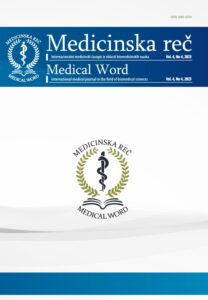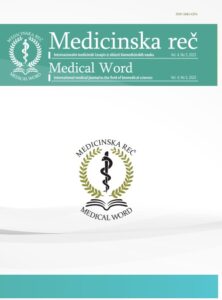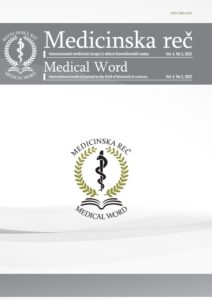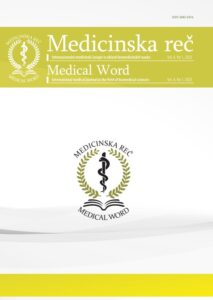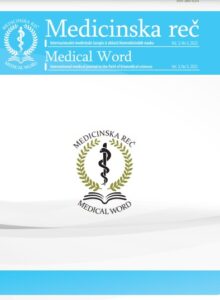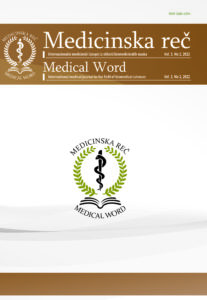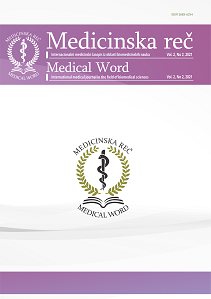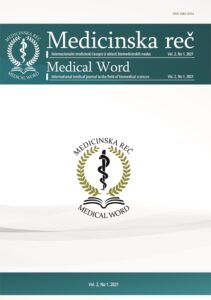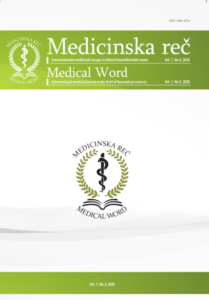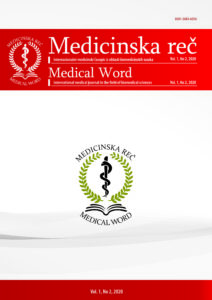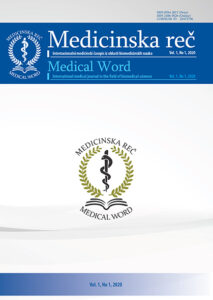The importance of folic acid use in pregnancy
Review article
Miodrag Savović
22–25
https://doi.org/10.5937/medrec2301022S
Abstract
Pregnancy is a unique period in a woman’s life. Intensive growth and fetal development are to cause significant physiological changes in mothers’ organisms. Adequate intake of nutritive elements represents a way to prevent congenital anomalies associated with dietary deficiency.
There are numerous dietary suggestions for the period before conception, during pregnancy, as well as during lactation, from many health organizations, including the World Health Organization (WHO).
Studies from the late nineties of the 20th century suggest considerable significance between folic acid intake and preventing neural tube deficits. Neural tube deficits are a group of congenital anomalies we see in everyday work with patients, the most common being spina bifida and anencephaly.
Prescribing adequate therapy as soon as during family planning is significant for successful development during pregnancy and wishful outcomes after birth.
Key words: folic acid, Neural tube defects, pregnancy
Literatura
- Marangoni F, Cetin I, Verduci E, et al. Maternal Diet and Nutrient Requirements in Pregnancy and Breastfeeding. An Italian Consensus Document. Nutrients 2016; 8: 629.
- Rush D, Stein Z, Susser M. A randomized controlled trial of prenatal nutritional supplementation in New York City. Pediatrics 1980; 65: 683-97.
- Kramer MS, Kakuma R. Energy and protein intake in pregnancy. Cochrane Database Syst Rev 2003(4): CD000032.
- Chervenak FA, Isaacson G, Streltzoff J. Craniospinal and facial defects. In: James DK, Steer PJ, Weiner CP, Gonik B (eds). High risk pregnancies. London, Philadelphia, Toronto, Sydney, Tokyo: WB Saunders; 1994: 871-900.
- Kurjak A, Kos M. Ultrazvučna dijagnostika fetalnih malformacija. U: Ginekologija i perinatologija II. Kurjak A i sur. (ur). Varaždinske Toplice: Tonomir; 2003: 205-40.
- Chervenak FA, Isaacson G, Lorber J. Anomalies of the fetal head, neck and spine: Ultrasound Diagnosis and management. Philadelphia: WB Sounders Co; 1988
- Thieme G, Manco-Johanson ML, Cioffi-Ragan D. Three-dimensional neonatal neurosonography. In: Kurjak A i Kupešić S. Clinical Aplication of 3D sonography. New York, London: The Parthenon Publishing Group; 2000: 181-90.
- Giroud A. Anencephaly. U: Vinken GW, Bruyn PW, ur. Handbook of Clinical Neurology. Vol 30. Amsterdam: Elesvier/North Holland Biomedical Press; 1977: 173-208.
- Campbell S, Johnstone FD, Holt EM, er al. Anencephaly: Early untrasonic diagnosis amd active management. Lancet 1972; 2: 1226.
- Kurjak A. Prenatalna ultrazvučna dijagnostika i terapija malformacija ploda. U: Zergollern Lj, Kurjak A. Prenatalna dijagnostika. Zagreb: JUMENA; 1984: 93-175.
- Ingrahm FD, Swan H. Spina bifida and cranium bifidum. I. A survey of 546 cases. N Engl J Med 1943; 228: 559.
- Guinotte CL, Burns MG, Axume JA, et al. Methylenetetrahydrofolate reductase 677C->T variant modulates folate status response to controlled folate intakes in young women. J Nutr 2003; 133: 1272-80.
- Goetzl LM, 2021. Folic acid supplementation in pregnancy. U Post TW (urednik): UptToDate. UpToDate, pristupljeno 25. jula 2022, https://www.uptodate.com/contents/folic-acid-supplementation-in-pregnancy
- Blatter J, HAN YY, Forno E, et al. Folate and asthma. Am J Respir Crit Care Med 2013; 188: 12-7.
- Veeranki SP, Gebretsadik T, Dorris SL, et al. Association of folic acid supplementation during pregnancy and infant bronchiolitis. Am J Epidemiol 2014; 179: 938-46.
- Chatzi L, Papadopoulou E, Koutra K, et al. Effect of high doses of folic acis supplementation in early pregnancy on child neurodevelopment at 18 months of age: the mother-child cohort „Rhea“ study in Crete, Greece. Public Health Nutr 2012; 15: 1728-36.


